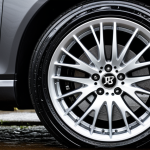Importance of Vehicle Safety for Teen Drivers
When it comes to teen driver safety, understanding the importance of vehicle safety is crucial. Statistics show that younger drivers are at higher risk of accidents due to their lack of experience on the road. In the UK, many accidents involve teen drivers, highlighting the need for them to operate vehicles equipped with effective safety features.
Parental guidance plays a pivotal role in ensuring that teenagers are well-prepared for safe driving. Parents should prioritize selecting cars with robust safety ratings and technologies. It is essential for parents to review crash test results and opt for vehicles equipped with modern safety equipment. Points to look for include airbags, anti-lock brakes, and stability control systems, all of which can significantly reduce the severity of an accident.
A voir aussi : Exploring the Impact of UK Seasonal Variations on Electric Vehicle Battery Efficiency
Encouraging responsible driving habits alongside the selection of safe vehicles for teens fosters a culture of safety. By emphasizing the importance of choosing the right vehicle and utilizing it responsibly, parents can better protect their teen drivers.
Key Safety Features to Look For
Understanding vehicle safety features is essential, especially when selecting a car for teen drivers. A combination of safety technology and high crash test ratings can significantly mitigate the risks associated with inexperienced drivers.
En parallèle : Boosting Road Safety in the UK: The Impact of Dashboard Cameras on Driving Laws
Essential Safety Features
When choosing a car for a teen driver, look for basic yet crucial features like airbags and anti-lock brakes. These features can greatly impact the outcome of a crash by reducing impact severity and maintaining steering control.
Advanced Safety Technologies
Modern cars often come with advanced safety technologies designed to prevent accidents before they occur. Lane departure warnings and automatic emergency braking are invaluable for keeping young drivers on track and avoiding collisions.
Understanding Euro NCAP Ratings
The Euro NCAP ratings provide an objective evaluation of a vehicle’s safety performance. A high rating suggests that a car has undergone rigorous testing, ensuring it offers optimal protection in various crash scenarios. Understanding and utilizing these ratings can guide parents toward making safer vehicle choices for their teens.
Recommended Vehicle Models for Teen Drivers
Selecting the best cars for new drivers involves careful consideration of safe vehicles for teens that offer comprehensive safety features and reliability. The choices span across various types, ensuring that there is a model suited to every preference and requirement.
Compact Cars
Compact cars are favored for their ease of handling and maneuverability, making them ideal safe vehicles for teens who are still gaining confidence on the road. Models such as the Ford Fiesta and Toyota Yaris are renowned for their robust safety technologies, including automatic emergency braking and lane-keeping assist. These features support teen driver safety by helping prevent common driving errors associated with inexperience.
Sedans
For those seeking a balance of style and safety in best cars for new drivers, sedans offer a compelling choice. The Honda Accord and Volkswagen Passat, for example, score high on crash test ratings and include extensive vehicle safety features like multiple airbags and stability control. These models provide additional space without compromising on the essential safety elements needed for safe vehicles for teens.
SUVs
SUVs are an option for those prioritizing safety through size and sturdiness. Models like the Subaru Forester and Hyundai Tucson are popular safe vehicles for teens that pair enhanced safety with a commanding view of the road. Their advanced safety technologies, such as blind-spot monitoring and collision avoidance systems, offer reassurance to both parents and new drivers.
Comparing Vehicle Options
When searching for the ideal vehicle for a teenager, understanding the landscape of vehicle comparisons is vital to making an informed decision. Parents often juggle between ensuring robust protection and managing affordability. Here’s how you can assess different options effectively.
Methods for Comparing Safety Features:
Assessing safety features across models can be daunting, but the importance can’t be overstated. Begin by examining comprehensive crash test ratings, as they provide insights into how vehicles perform under crash scenarios. Tools like the Euro NCAP ratings offer a standardized measure, making it easier to compare the safety level of each vehicle. Additionally, consider which safety technologies are standard versus optional. Features such as airbags and lane departure warnings vary by make and model, but they are essential for novice drivers.
Budget-Friendly Options:
Balancing safety with cost is crucial. Opt for vehicles that offer basic safety features without unnecessary luxuries that drive up the price. Compact cars and entry-level sedans often present a sweet spot, combining affordable pricing with essential safety capabilities. Research deals on models such as the Ford Fiesta or the Toyota Yaris to maximize value.
Considering Insurance Costs:
Insurance is a significant ongoing expense for young drivers. Vehicle choice can heavily influence premiums, with factors like engine size, model year, and safety features playing a role. To keep costs manageable, look for vehicles that boast both strong safety ratings and modest insurance group assignments. Always seek quotes from multiple providers to get the best deal. Understanding these aspects ensures parents can make decisions that don’t compromise on safety or financial prudence.
Preparing Your Teen for Safe Driving
Guiding your teen towards responsible driving is a multifaceted process that demands patience and persistence. Ensuring that your teen develops safe driving habits is paramount for their safety and confidence on the road.
A cornerstone in preparing a teen for driving is enrolling them in driving education courses. These courses, often available through schools or private institutions in the UK, provide structured learning environments where teens can build a solid foundation of driving skills. They help in mastering essential techniques and understanding the rules of the road, which are vital for safe driving tips.
The Importance of Supervised Driving
Supervised driving is an invaluable element of a teen’s driving education. It provides them with real-world experience under the guidance of a more experienced driver, usually a parent or instructor. The hands-on practice helps teens to react to various traffic situations while applying safe driving tips. This ensures they become comfortable and competent before venturing out independently.
Teaching Responsible Driving Habits
As part of the coaching process, it’s crucial for parents to emphasize responsible driving. This involves instilling the importance of obeying speed limits, maintaining focus, and avoiding distractions such as mobile phones. Encouraging teenagers to drive during different times of the day and in various weather conditions also prepares them for a wide range of scenarios.
Resources for Driving Education
The UK offers numerous resources for driving education, including online materials and local courses tailored to new drivers. These resources are designed to reinforce learning and keep responsible driving at the forefront of a teen’s mindset. By leveraging these tools, parents can ensure that their teens are not only prepared for their driving test but are also capable of sustaining safe driving practices long-term.
Understanding UK Regulations and Insurance Implications
Navigating UK driving regulations is essential for both parents and teenagers as they prepare for the challenges of teen driver laws. For new drivers, there are specific regulations, such as the age and requirements to obtain a provisional driving license, followed by a mandatory learner’s permit phase. This phase demands supervised driving experience, emphasized by the need for accompanied lessons.
Regarding vehicle insurance, young drivers often face high premiums due to the increased risk associated with inexperience. It’s crucial to understand how insurance costs can vary depending on factors like vehicle type, model year, and the safety features equipped within the car. Generally, cars with higher safety technology and favorable crash test ratings can result in more affordable insurance premiums for teens.
To find affordable insurance options, parents can explore multi-policy discounts, consider vehicles in lower insurance groups, or utilize telematics-based policies that adjust rates based on driving behavior. These strategies can effectively mitigate costs while ensuring safe vehicles for teens.









